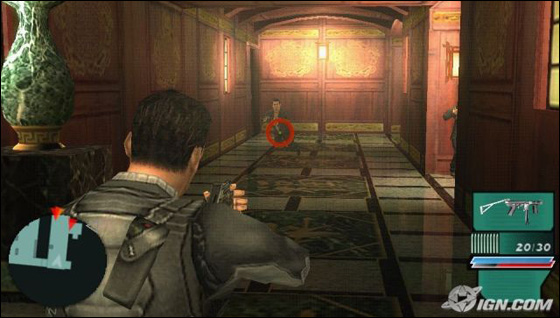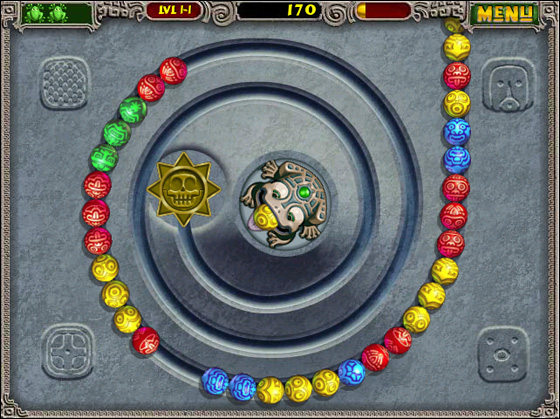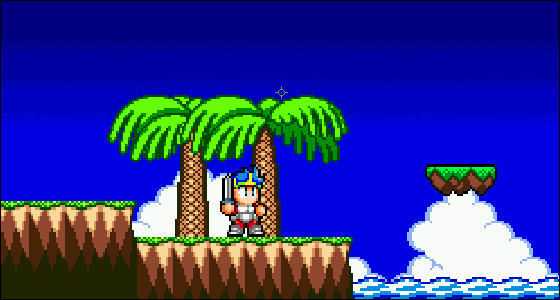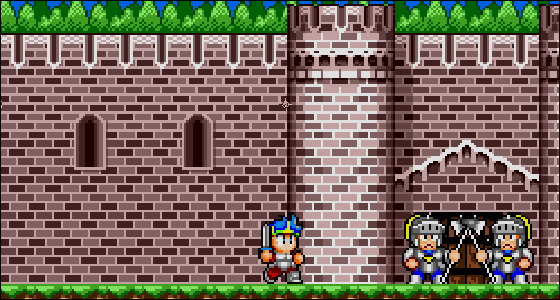The Trophies Dilemma + In-Game Rewards
February 14th, 2009

As I’ve mentioned a few times since I got back, I got myself a Playstation Network ID and have been putting it to good use. I’m not too fond of online play fullstop and to be honest the Playstation 3 online space seems a little scattered anyways. So instead of owning n00bs online I’ve been savouring the downloadable delights on the Playstation Store which has in turn brought up a new dilemma; Trophies, or rather how to approach them.
Several of the PSN games I bought have trophy support and pretty much anything I’ll continue to buy either online or off will have the feature. It should be known that I am a perfectionist with games. Pretty much most of the games I own I finish to near as 100% completion as possible, playing both normal and hard difficulties respectively. Trophies in this case represent a significant burden to my perfectionist reputation, one that I’m not too sure on how to shoulder.
I tried to ignore the whole idea for a few days but after the idea popped back into my head when reading an article about it over at the You Are Lose! blog, I decided that I needed to figure it out. Korey’s commentaries put everything into much clearer view so I eventually settled on only gunning for trophies that work within my means. That is, fun without sacrificing enjoyment or copious amounts of time.
At the same that all of this was going on I was thinking about the rewards system featured in Syphon Filter: Dark Mirror and how I like it so much in contrast to trophies ^_^ . Dark Mirror’s reward system works in a similar way to many in-game reward systems but it’s much more fleshed out.
Hidden Evidence
Within each level several pieces of hidden evidence are tucked away. Finding all of the evidence in a given episode (series of levels) unlocks your typical fare of bonus content accessible from the main menu. On obtaining some pieces of evidence you are rewarded with a brief cut scene that ponders various plot points stringing from the main story. These cut scenes work to reinforce what is happening behind the scenes of the main plot and develop the further you progress in the game. This mechanic does an effective job at re-plugging the narrative back into the core gameplay while at the same time being dynamic and completely optional to the player.

The majority of the evidence is hidden in typical easter egg fashion, but some of the more significant pieces require a little more effort. Key documents are hidden behind doors which require first finding a card key, locker key or other to open. Once you’ve found that key it can be continuously re-used in later levels to access additional weaponary, routes and so forth. Basically your curiosity is rewarded in multiple ways and acts as a positive reinforcer to encourage continual investigation.
Career Rating
To reward actual skill the game has a badge system which draws upon your playing statistics. The more you excel in X field, the more your badge percentage in that field increases. Once you reach 100% you can move onto the next badge rank in that field. Completing each badge unlocks new weaponary which can be used again in the Mission Mode (play individual levels seperately) and multiplayer. Both story mode and mission mode statistics add to the badge’s percentages. Assuming that the average player completes the story mode first, the work they have already done is rewarded with extra weaponary which comes in handy for when they later move onto the mission mode.
There are five fields of badges split into three categories, so it acomodates varying play styles well. Gabe also gives you a speech for each badge you are awarded which is a nice personal touch. Getting the protagonist to complement the player directly is quite an effective way to thank the player for the investment they have put into the game.
Rewards
The rewards themselves are quite generous including additional missions, videos, narrative pieces and weaponary. Unlike some games where some of the best content is locked away form the start, Dark Mirror is quite gracious with how it doses out it’s bounty of extras. The game is already significantly fleshed out, so the rewards feel like actual rewards instead of content constrained from the beginning. The extra missions particularly are quite generous.
In contrast to some trophies (as pointed out in Korey’s article) the requirements are also within reason. As suggested a few times already the rewards plug back into the game’s narrative and gameplay which is a nice touch too.
On editing this I can’t help but point out the lack of analysis (few sentences) between the bulk of feature listing. >_<
What I Learnt From A Stone Frog Spitting Coloured Marbles
February 12th, 2009
In the month before I left for China (last August) I found myself obsessed with one of the greatest games in the world; Zuma (watch the video, it articulates the game better than I ever could). My brother had bought this off Steam previously and I was keen to give it a go before even daring to attempt playing some of the more “macho” PC titles on offer. “Give it a go” soon turned into an all-day-everyday marathon during the days before I left. Unfortunately, my save data was lost in the transition across and I couldn’t take the game with me overseas. Just the other day though I happily began replaying my beloved Zuma and was already up the final series of levels on my first play.
Having beaten most of the game in a single sitting, I returned later to finish it off, continuing at the punishingly difficult final chapter of the game. Three hours went by with little progress except two slight observations that had formed in my subconscious while spitting coloured marbles. The first was that the more I played Zuma, the more bitter it tasted. The game had me caught in a routine of continual failure and was lavishing in the moment.

The second observation is a little more fleshed out. Each time the train of marbles had crept dangerously close to the hole at the end of the trail I immediately felt reluctant to continue adding to chain in fear that I would push it too far forwards and have to painfully restart. I guess this is a natural hesitation. As I soon realized though, you effectively have no choice. The only way in which you can shorten and eventually remove the chain is to continually add to it as quickly as possible. The more marbles you match, the more disappear, the shorter the chain. The dreaded squeeze near the end, accompanied by the you-are-about-to-die music is inevitable in these later levels, so you either learn to fire faster or simply lose. And you add in order to take from start to end, even when the stream slows, you still need to remove any remaining marbles before momentum sends them on their roll to the centre hole. Having become reacquainted with this methodology another two ideas sprouted out from my original observation.
The first being how the mechanics of Zuma are actually metaphoric of the expression “you’ve got to spend money to make money”. As Zuma would have it, a failure to spend money, a failure to fire marbles will result in no success. On the otherhand, firing more marbles results in completion.
The other idea that came to mind is like many games with hardened difficulty levels, at such an intensity Zuma begins to re-structuralize the way it teaches you. The difficulty forces you to re-analyze and reconsider your previous way of playing the game. There is a eureka moment where after multiple failed attempts and slight re-evaluations each time, you click and suddenly see the game in another light, putting new techniques into play.
As Iroquois Pliskin points out in his blog post How it is that Games Teach you Things “most games face the task of making their underlying logics apparent to the player.”. This example can be broken down metaphorically into primary and high school education (combined) and tertiary education. Primary and high school education are presented to the player in Zuma’s introduction screen. By increasing the difficulty, sub-techniques – ie. coming to the conclusion that the more marbles you fire the better – are slowly realized, drawing the player closer to the rules of the gameworld. The various sub-techniques are not so much taught but researched and extracted likening itself to tertiary education.
Super Happy Pleasant World
February 11th, 2009
Wonder Boy in Monster World strikes a strong nostalgic chord with me. Growing up my brother and I never owned a Sega Megadrive instead we spent countless weekends at my cousin’s house playing games like Sonic, Golden Axe, and the fantastic series of first party developed Disney titles. Even though I still don’t own a Megadrive, I’ve had a surprisingly good history with the system and its games, with the newer compilations used to pick up the slack.
All of the games I’ve listed are all particularly nostalgic to me but none more so than Wonder Boy in Monster World. I delightfully picked up a copy from the Wii Virtual Console recently and have been savoring the delights of this adorable title.
There are two things which I love about the game and they fittingly go hand in hand together. That is the slower paced movement and larger sized sprites. Usually I can’t stand slow moving 16-bit platformers, they either lack challenge or feel cumbersome, but Monster World is a little different. Different because it encompasses more Metroidvania-esque qualities to it instead of being a typical platform affair. The more so RPG-like elements are basic, simplified and low fuss, just like the platforming. So neither component is fleshed out enough to really require much strain on the brain. This makes playing Monster World pretty breezy.
Now the bulky sprites are great because they accommodate the perky expressions that emit from every single ounce of life in this game. Every place is decked in plushness, every created crowning googly eyes that scream cuteness. The slower speed of the game acts to reinforce your role as a tourist of Monster World, merely a spectator to the cheerful grins and dashing animations. I just love the adorable nature of this game in both looks and simplistic (yet managably elegant) design.
Now this post is part of the Visual Connecton regular features which means beyond wasting this space with text that beats around the bush I also need a handful of pictures. So here we go, cuteness galore.

![]()




 Game Design Companion: A Critical Analysis of Wario Land 4 - $7.99
Game Design Companion: A Critical Analysis of Wario Land 4 - $7.99 Level Design: Processes and Experiences
Level Design: Processes and Experiences Speed Boost: The Hidden Secrets Behind Arcade Racing Design - $5.99
Speed Boost: The Hidden Secrets Behind Arcade Racing Design - $5.99 Adventures in Games Analysis: Volume I - $5.99
Adventures in Games Analysis: Volume I - $5.99







